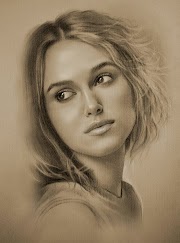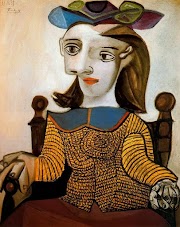The paintings of Tertia du Toit have been described as an uninhibited outpouring of inspiration, life and creativity. Through a lyrical focus on the female figure du Toit evokes a sense of joyous sensuality in life itself. Not cluttered with inpenetrable symbolism her works are a classic invitation to take part in a contemporary ‘joie de vivreâ?.
e paintings of Tertia du Toit are aptly described as an uninhabited outpouring of insperation, life and creativity. Trough a lyrical focus on the female figure, du Toit evokes a sense of joyous sensuality in life itself. Not cluttered with impenetrable symbolism or unsolved obsessions, her works are a classic invitation to take part in a contemporary joie de vivre. In a visually oversaturated age she has managed to create a unique and liberated style of pictorial expression.One need not be a detictive or Freudian or Jungian analyst, to be aware of a strong element of eroticism in these works. The oranges which the spectator is invited to kiss, are not presented on a plate in isolation, but in the hands of a young, very lively, very beautiful, very inspired and lovable woman, wearing a casual little dress, which by no means conceals more than what is necessary, and wearing, at the same time paradoxically and appropriately - like a goddess of love - a crown made of roses.
On the other hand, it is equally difficalt to ignore the religious elements in many of the work.
In 'Dostojefski' a dungaree is depicted together with a crown of thorns; a work portraying Christ is called 'Vitamine Christus'; in 'Johannes' which might or might not refer to the biblical Johan, the model is wearing a heart on his dungarees and many of the woman portayed are wearing crowns made either of flowers or thorns; in 'Pelgrim' and 'Pilchards' the man with a basket of fish seems to have a definite religious symbolic meaning; a work called 'Groen' is done in the form of green cross; and 'Blou' in the form of a blue cross. A little girl playing with imaginative birds and aeroplanes is called 'Ruth'.
A third element, which might be less obvious, is the immense intensity of light in these works, especially where oranges are depicted - the intense sunlight is both life-giving and reminds us in a paradoxical way of a certain time of day, and thus of time itself and the transitory nature of our lives on earth.
Because of the intense shadows might, for yhose who see them, be a reminder of death, and also a completion of the circle of life and death on earth.
From a more traditional Christian point of view, these fruity goddesses of love and fertility may be irreconcilable with the often sexless and ascetic Christian tradition.
The artist finds the reconciliation for these apparent contradictions in the Bible itself, in her works from the Song of Solomon, as well as in a children's drawing of naked Eve swinging in a tree on what seems to be part of the body of a snake.
But even if these reconciliations did not exist in the Bible, the artist would have been able to provide them, with her uninhibited outpouring of inspiration, life, health, energy, creativity and above all, love.
Which is, after all, the best thing any artist or saint could bring into the world.
Source









































0 Comments